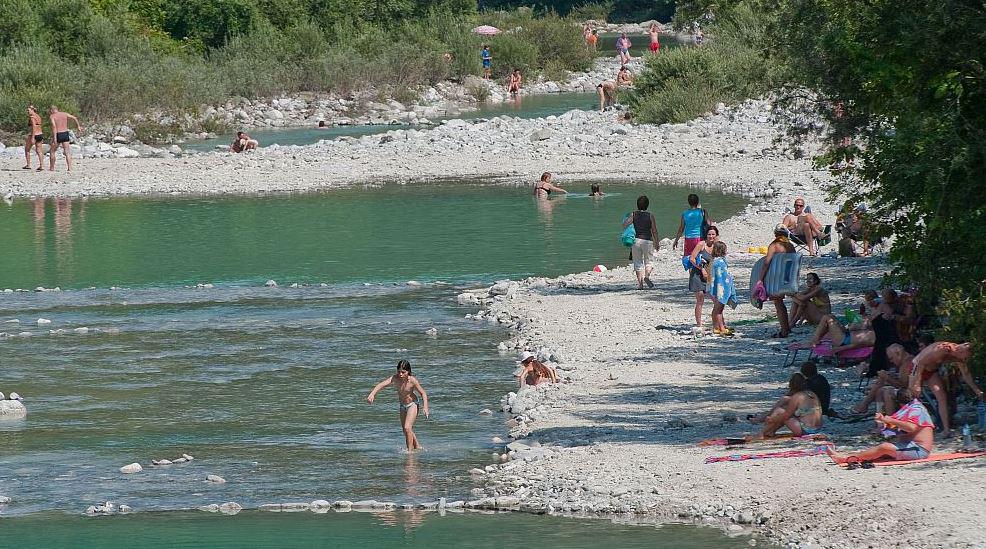
Bathing and swimming in summertime is a popular activity that provides opportunities for entertainment, relaxation, rest and play, all beneficial to one’s health. However, one needs to be careful when choosing the location where to bathe or swim. Therefore, data on water quality are of key importance to swimmers and can be found in Slovenia on boards put up by most waters that people use to bathe in. Despite the fact that all bathing waters regularly reach at least minimum standards, people need to be aware that such water is not necessarily safe for for drinking and washing fruit in it, too, warns the report of the Slovenian Environment Agency (Arso).
Arso’s report is part of a larger report issued by the European Commission and the European Environment Agency, which also confirms a positive 40-year-long trend of increasingly cleaner water at European beaches and other bathing sites across Europe.
Slovenian sea of excellent quality without exception
Arso’s report for 2016 re-confirms that the microbiological quality of the seaside locations is of excellent quality. Since 2010 when the monitoring had begun, no bathing site on the Slovenian coast has been graded as less than excellent. In recent years there have been virtually no indicators of Escherichia coli bacteria and intestinal enterococci in saltwater samples, notes Arso. Possible oscillation in terms of quality may occur in the case of a cleaning plant malfunction or after heavy rains when rainwater and faecal water mix in the overburdened sewage systems. Another potential source of pollution lies in illegal releases of faeces from boats of swimmers themselves, warns the report.
‘Excellent’ and ‘good’ bathing waters inland
In 2016 ‘excellent’ microbiological quality of water was determined at 14 inland locations, which represents 53.8 percent of all inland bathing waters. The sites with ‘excellent’ water include both swimming locations at Lake Bohinj (Fužinski zaliv, Ukanc), all five areas at Lake Bled, the Šobec Pond, three sites on the Kolpa River (Adlešiči, Dragoši – Griblje, Pobrežje – Fučkovci), the Krka River near Žužemberk, and the Soča River at the Tolmin I. bathing site.
Gorazd Kosmač, MMC; translated by K. Z.


































































